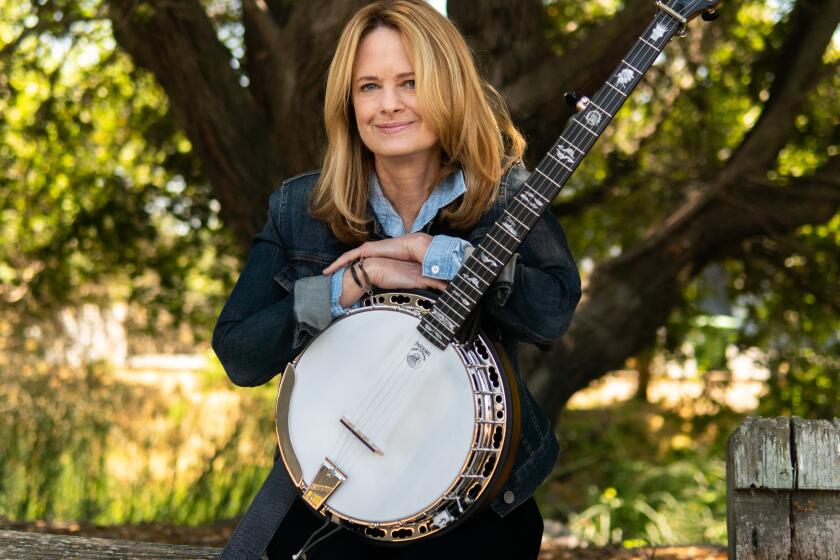A Physical Game of Chess: La Jolla Fencing Academy opens to teach swordsmanship
In mid-February, La Jolla Fencing Academy opened at 8657 Villa La Jolla Drive to bring the classic sport to anyone who has ever wanted to shout, “en garde!”
Touted as “a physical game of chess,” fencing enhances one’s abilities to concentrate and to strategize, which founder, head coach and international champion Dmitriy Guy, said are among some of the most important traits of a good fencer.
“Fencing teaches you how to be focused and make quick decisions. It also works the other way around; if you are already able to make fast decisions and focus, you could be a good fencer,” he explained. “You have to lure your opponent into the chain of your actions or change your actions based on what they do — so you have brain work, foot work and blade work at the same time, which is not easy.” Other qualities include quick reaction time, agility, leg strength and fast footing.
Guy’s mental skills were actually what got him into fencing when he was a child in the Soviet Union.
“I was not an athletic child and was not good at sports, but I liked math. When I was 9 years old, the main sports club in the Soviet Union was accepting students for its fencing program. … The first year was difficult, my first coach hated me because I wasn’t coordinated or athletic, but I was able to strategize. Slowly I got better … and I’ve been fencing ever since,” Guy said. “I think it’s the greatest sport in the world.”
There are three types of swords used in fencing: foil, sabre and epee, and the objective is to touch your opponent with the tip of the weapon. Both fencers wear heavily padded vests to prevent injury. Guy’s sword of choice is the sabre.
Among his accolades, Guy is a former professional fencer for the USSR fencing team, a national champion for the Soviet Union, a European champion and a finalist at two junior world championships. After he moved to the United States in 1991 following the dissolution of the Soviet Union (which brought several prominent fencers to America), Guy began representing the United States in similar competitions.
“A couple of years ago, I fenced on the North American open circuit and everyone thought I would get eliminated in the first round. I didn’t ... and went on to fence against kids who were 20 years old and a college student from Penn State. I beat the college student and his coach tried to recruit me!” he said.
When it came time to switch to coaching, Guy opened the Spartak Fencing Club — named for the gladiator Spartacus — with several locations across San Diego. In that time, he instructed two of the now-coaches of UC San Diego’s fencing program, multi-medal winner Barron Nydam and Olga Kalinovskaya, one of three people in the world to win a NCAA fencing title during each of her four college years (plus two more for her team).
As to why he opened an academy in La Jolla, the Del Mar resident said, “La Jolla did not have a fencing club and I thought as a community it should have one. I love the families who are interested in this sport … Plus, with the proximity to UC San Diego, La Jolla was a good fit.”
And though it has been open for less than two months, students have flocked to Guy’s studio and some of his former students have come back to assist with coaching.
Student James Gordon, 17, also a sabre fencer, said he got into the sport when he lived in Virginia as a child. Fencing is reportedly widely popular on the East Coast and throughout Europe. “There was an after-school fencing program for elementary-schoolers,” Gordon said, “and I would go for an hour or two, a few days a week. My interest carried over when I moved to San Diego. I didn’t fence competitively, it was more recreational, but I love that I get to say I fence, which is not something most people get to say. It’s an odd sport, but it’s fun.”
He added that he hopes to continue fencing in college. “Fencing is definitely a factor in which college I’ll decide upon,” James said.
Sabre fencer Alex Reinsch-Goldstein, 14, said his interest in fencing spurred from his interest in history. “Fencing grew out of war and dueling, and other violent activities. I thought this was something with hundreds of years of history and development to it, so it appealed to my other interests, as well. Thanks to fencing, I’ve developed the ability to strategize, and now I can say I do a sport that is rather unique,” he said.
Fencer Ilan Jinich, 13, said he appreciates that fencing places priority on intellect. “While in most other sports, athletes have to have a physical advantage over others, in fencing, being smart is the advantage,” he said.
For coach and Guy’s former student, Nydam, having fencing as part of his resume opened up opportunities for travel and education. “I was a four-time All-American at Notre Dame and a NCAA national champion in the team event. Then, I was a member of the junior world championship team (for fencers under age 20), representing the United States, twice,” he said. “For six or seven years, I was traveling to Europe five times a year for competitions. It was a wonderful time of my life. I got to see the world and know people from all over — an amazing experience to have at such a young age.”
Nydam also said fencing was an asset when it came to applying for college. “I had good grades and good SAT scores, but the schools got to know me from fencing. I had my choice of colleges,” he said. “Fencing is one of those sports with a presence at all the great institutions. It’s an amazing way to open doors.”
Case in point, Guy’s son, Philippe, also a competitive fencer, is a freshman at Harvard. When home, Philippe is also a coach at the La Jolla Fencing Academy.
What to expect
A typical lesson at the studio consists of stretching and agility exercises, followed by drills and suiting up for exercises with a coach or one’s fellow students. Private lessons are also available, and Guy advocates for a mix of private lessons and group classes. Ready to train expert fencers, the flooring at the facility is similar to the flooring found at high-level competitions.
In May, the studio will host a fencing competition, at which Guy will fence. In June, there will be summer camps with world championship fencers on hand.
The ‘point’ of fencing
To succeed in fencing, you need to hit without being hit. “The rules are built around European dueling — kill without being killed — only we don’t kill anyone, we just score ‘touches,’ ” said Guy.
In a match, you fence until you touch your opponent with the tip of your weapon, then the two fencers step back, return to the “en guarde” position and fence again. Whoever scores five touches first wins.
Historically, touches were measured in blood; when one fencer was touched, he would bleed and that’s how judges would know who got the point. Then fencers used paint on the tips of weapons because judges could see it on a fencer. Next, it evolved to having referees and judges visually determine touches. Next, came wires running through uniforms to record a touch. Now, at the highest competitions, wireless technology is used.
ON THE WEB: Learn more at lajollafencingacademy.com
Get the La Jolla Light weekly in your inbox
News, features and sports about La Jolla, every Thursday for free
You may occasionally receive promotional content from the La Jolla Light.




